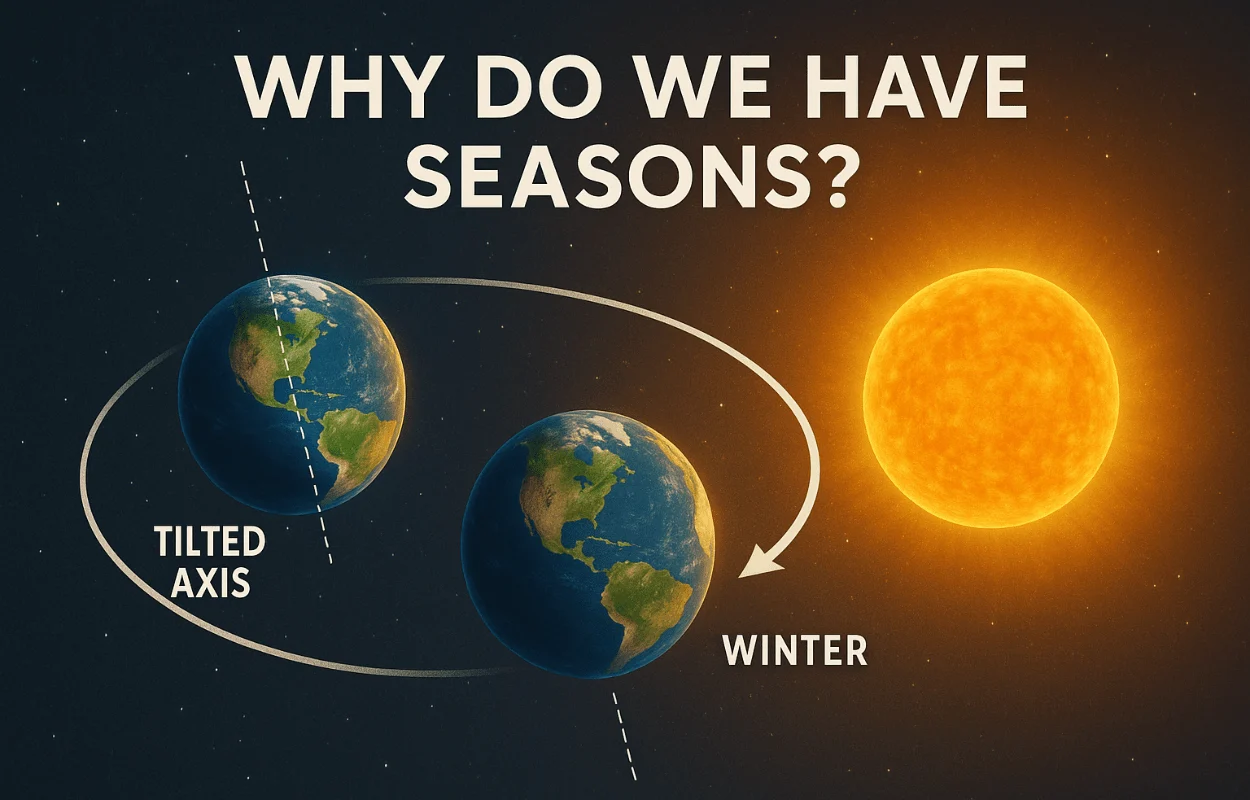Why Do We Have Seasons?
Why Do We Have Seasons?
We experience seasons — spring, summer, autumn, and winter — because of the way Earth orbits the Sun and the fact that Earth's axis is tilted at an angle of about 23.5 degrees. This tilt causes different parts of Earth to receive different amounts of sunlight throughout the year, leading to changes in temperature and weather patterns.
Without the tilt, we wouldn’t have seasons — every place on Earth would have about the same weather all year round!
Earth’s Tilt: The Main Reason
Earth’s axis is an imaginary line running from the North Pole to the South Pole. This axis isn’t straight up and down — it’s tilted. As Earth travels around the Sun during its one-year orbit, sometimes the Northern Hemisphere tilts toward the Sun, and sometimes the Southern Hemisphere does.
When a hemisphere tilts toward the Sun, it experiences summer because the sunlight is more direct and the days are longer. When it tilts away, it experiences winter because the sunlight is weaker and the days are shorter.
How Seasons Change During the Year
- Around March 21 (Spring Equinox), both hemispheres get equal sunlight. In the Northern Hemisphere, spring begins. - Around June 21 (Summer Solstice), the Northern Hemisphere tilts most toward the Sun — it’s summer there and winter in the Southern Hemisphere. - Around September 23 (Autumn Equinox), both hemispheres again get equal sunlight — autumn begins in the Northern Hemisphere. - Around December 21 (Winter Solstice), the Northern Hemisphere tilts away from the Sun — it’s winter there and summer in the Southern Hemisphere.

Why Are Seasons Important?
Seasons bring a variety of weather that supports life on Earth. They affect growing cycles for plants, animal migrations, food production, and even human activities. Imagine living in a place where it was hot or cold all year — seasons add richness and balance to life on Earth.
Seasonal changes also create beautiful natural events, like colorful autumn leaves, blooming spring flowers, summer harvests, and winter snowfalls.
Fun Fact!
Earth's distance from the Sun does not cause seasons! In fact, Earth is slightly closer to the Sun in January (during Northern Hemisphere winter) and farther in July (during Northern Hemisphere summer). The real reason is the tilt of Earth's axis!
You might also like

Why Do We Have Day and Night?

Why Does Earth Have Tides?
